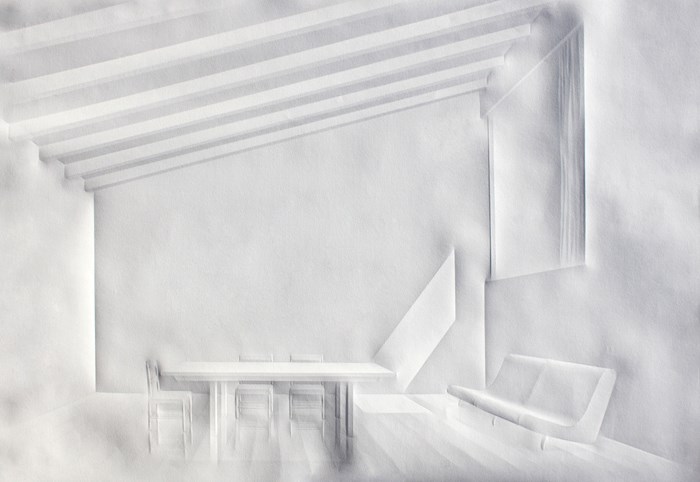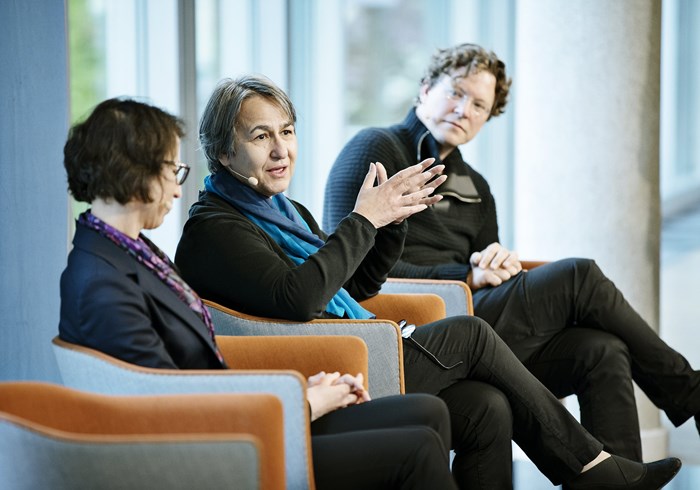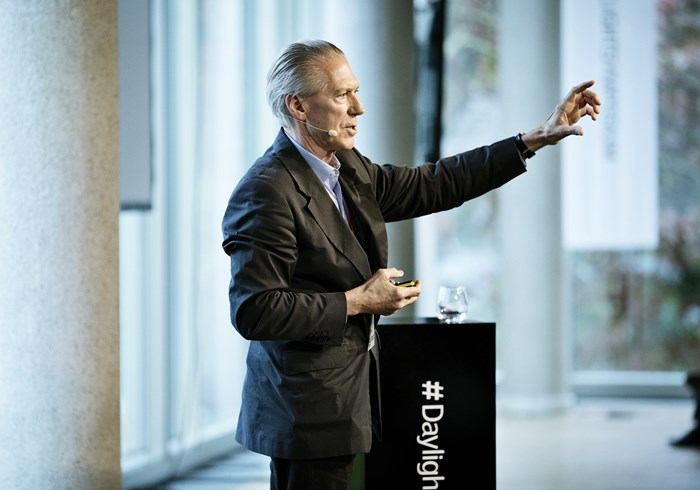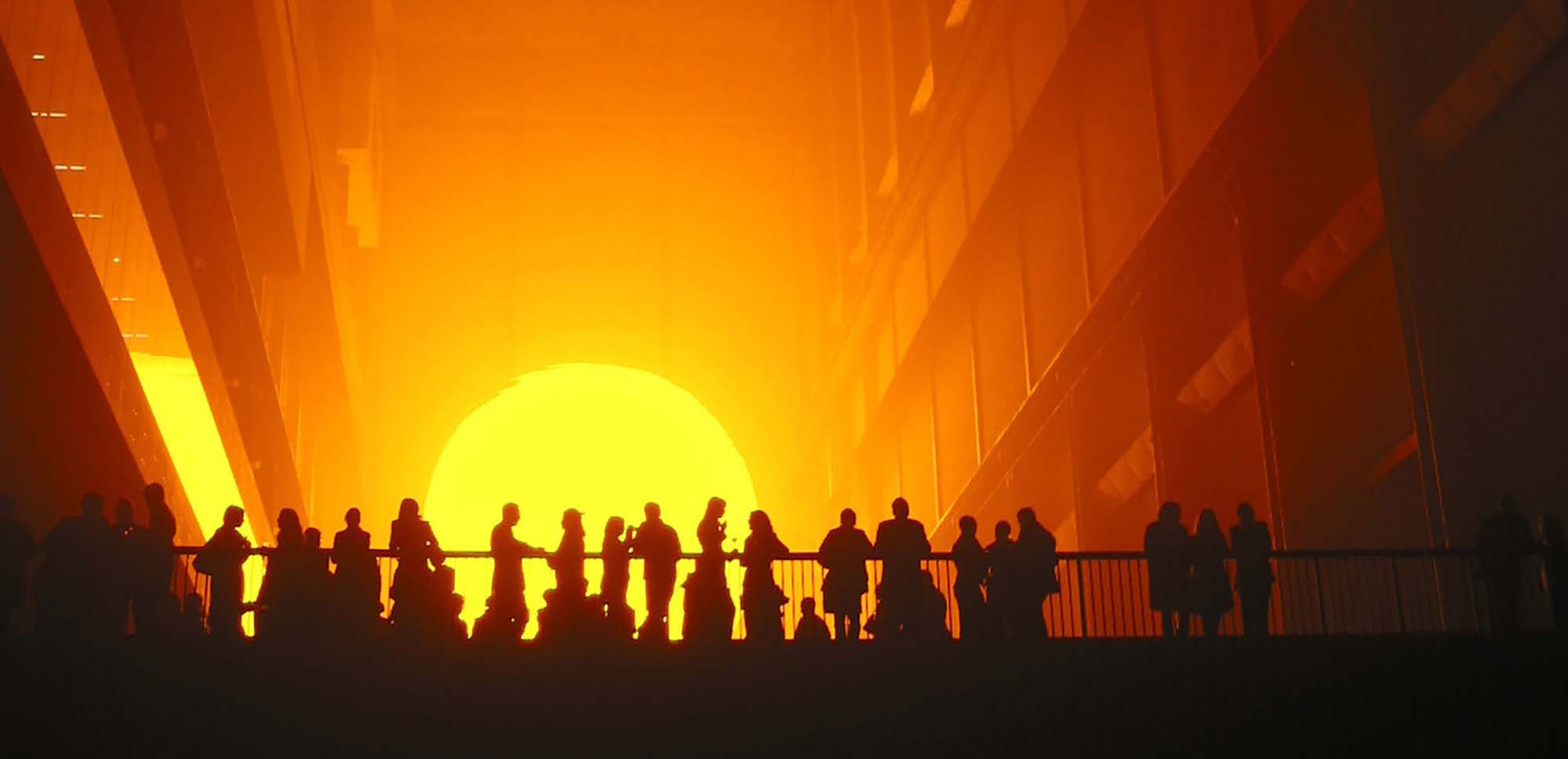
Olafur Eliasson outlines his focus on introducing sustainably generated light to off-grid regions of the world in this interview.
“If you actually understand the daylight potential – the heliotropic potential as it were – of a space, I think that you can build without a lot of artificial light.”
Olafur Eliasson
Interview by Jakob Schoof
Daylight & Architecture #24
Photo: Olafur Eliasson, The Weather Project, 2003. Photo by Andrew Dunkley & Marcus Leith
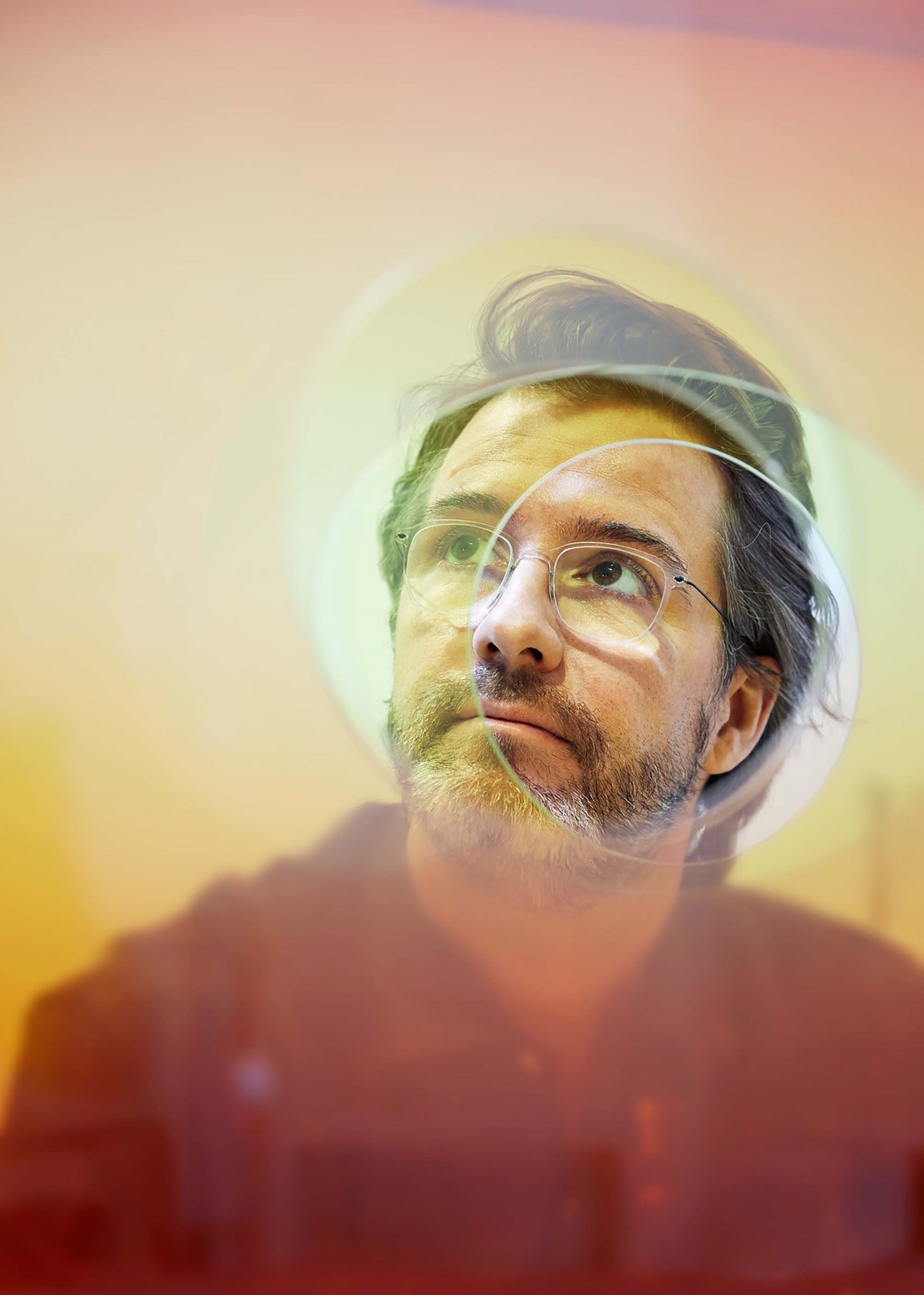
Throughout his career as an artist, Olafur Eliasson has been exploring how light affects human perception, social life and well-being. Now the Danish-Icelandic artist and his social business, Little Sun, have teamed up with the VELUX Group to launch Natural Light. The design competition aims to bring solar-generated light into off-grid regions of the world, thus replacing inefficient and polluting kerosene lamps (see the article Hooked on Light in this issue). Furthermore, Olafur Eliasson is akeynote speaker at this year’s VELUX Daylight Symposium in London. In an interview with Daylight/Architecture, he explained how light changed his life as a little boy, how he deals with the uniqueness of daylight as an artist today, and what he hopes to achieve with Little Sun and the Natural Light project in the future.
Mr. Eliasson, you will be speaking at this year’s VELUX Daylight Symposium in London, for which the organisers have chosen the theme Daylight as a Driver of Change.
When in your life did you first experience how light can change human lives?
It must have been when I was around five years old, spending the summer in Iceland at my grandparents’ home. It was the time of the oil crisis in Europe, and since Iceland had not yet developed the geothermal sources of energy it has today, the government had rationed the use of energy. This meant that after dinnertime, the power would be cut off, as if there had been a blackout. However, as it is still light outside in Iceland at that time of the year, we would all either go outside, if the weather allowed, or move our activities to the windows where there was this very beautiful blue summer light. Sitting by the window with this very atmospheric light made me aware, not just of the difference between incandescent light and daylight, but that you could actually use this little bit of blue light. Previously, when the electricity had been on, it seemed that the light outside was just dark or irrelevant, but once you did not have electricity, the daylight started to mean a lot, it became incredibly important.
As an artist, what is the main difference in your experience between working with daylight and working with artificial light?
Clearly, we only see things when light falls upon them or comes from them. Hence, a main focus of my work has always been on how light changes our perception of reality and enhances the quality of our experience. When it comes to daylight, I’ve been looking a lot at differences in its distribution around the globe. In Iceland, for example, the sun travels very low on the horizon. Thus, for more than two thirds of the day, the shadow is longer than the object that casts the shadow. The landscape as well as objects and faces are mostly side-lit with a very strong contrast between shaded and illuminated parts. This is a sort of drama in itself, which differs a lot from the situation in southern countries where the sun climbs very high and leaves almost no shadows.
You can also see these differences reflected in the history of painting. Paintings from Italy, for instance, often depict very little shadows. When Canaletto painted the houses on the Canal Grande in Venice, he painted the shadows between them dark blue –but he did not necessarily sculpt the Venetian cityscape by virtue of shadows. In Dutch or Flemish paintings, by contrast, you have the sun coming from in the side, which produces a different illumination and three dimensionality.
So there is a difference between how day light adds perspective or adds dimensions to space. I am actually not so interested in whether daylight is better than electric light, but much more in the fact that light is actually unique everywhere.
How do you reflect this uniqueness in your own work?
Starting from these observations, I became interested in recreating natural phenomena with artificial light, evoking similar experiences or questions, including critical ones. I focused a lot on the emotional effects of light. What does awarm tone of light do to us? Does it create other social patterns or strategies than cold light? Does cold light facilitate less hospitality? Are these definitions of hospitality versus less hospitality culturally or anthropologically different? I looked a lot at the atmospheric and social aspects of light, but not as a psychologist or a social scientist would do, but from the point of view of an artist.
Speaking of emotions – what qualities does an architectural space require so that you can feel an emotional attachment to it in?
Many people try to set up rules for what is good and bad architecture with regard to emotional responses. However, I think it is necessary to go a few steps deeper and question what an emotional response actually is and how it is caused. Does the response take place at the expense of the spatial atmosphere that the architect sought to create, or does it happen on behalf of it? Furthermore, we can ask what type of identification with a space makes you feel included and welcome and hosted. What architectural resources does it take for the people in the space to feel that they are worth something?
The German philosopher Gernot Böhme has made great achievements in defining a terminology of atmospheric conditions. Quite successfully, he objectified a number of these conditions that could be determined even without taking into account the people, creating them merely with the right kind of space, as it were.
However, I would argue that it always takes a subject, a person, to constitute an atmosphere. Hence atmospheric conditions can be ascribed to the viewer himself, meaning that the architect or artist can hand over their co-production, or even production, to the user.
This mindset is quite important because, as an architect, you sometimes take for granted the fact that you are the author of atmospheric conditions, without taking the user into account. In order to successfully create a great space, however, one has to know how to engage the user in the construction of the space. To me, this is an exercise of trust. The challenge is that architects are rarely educated to verbalise this field of knowledge, nor are they educated to trust people in the spaces they create. As a result, a lot of spaces today claim to be inclusive but are, in fact, exclusive because they do not trust the user to be able to co-produce the atmosphere. In these architectural spaces, identity is not in what you do, but in how you look.
Having made this point, one of the greatest atmospheric drivers is, of course, light. It is both the light that enters the space, as daylight, and the light that is already inside the space, in the right balance. And if you actually understand the daylight potential – the heliotropic potential, as it were – of a space, I think that you can build without a lot of artificial light.
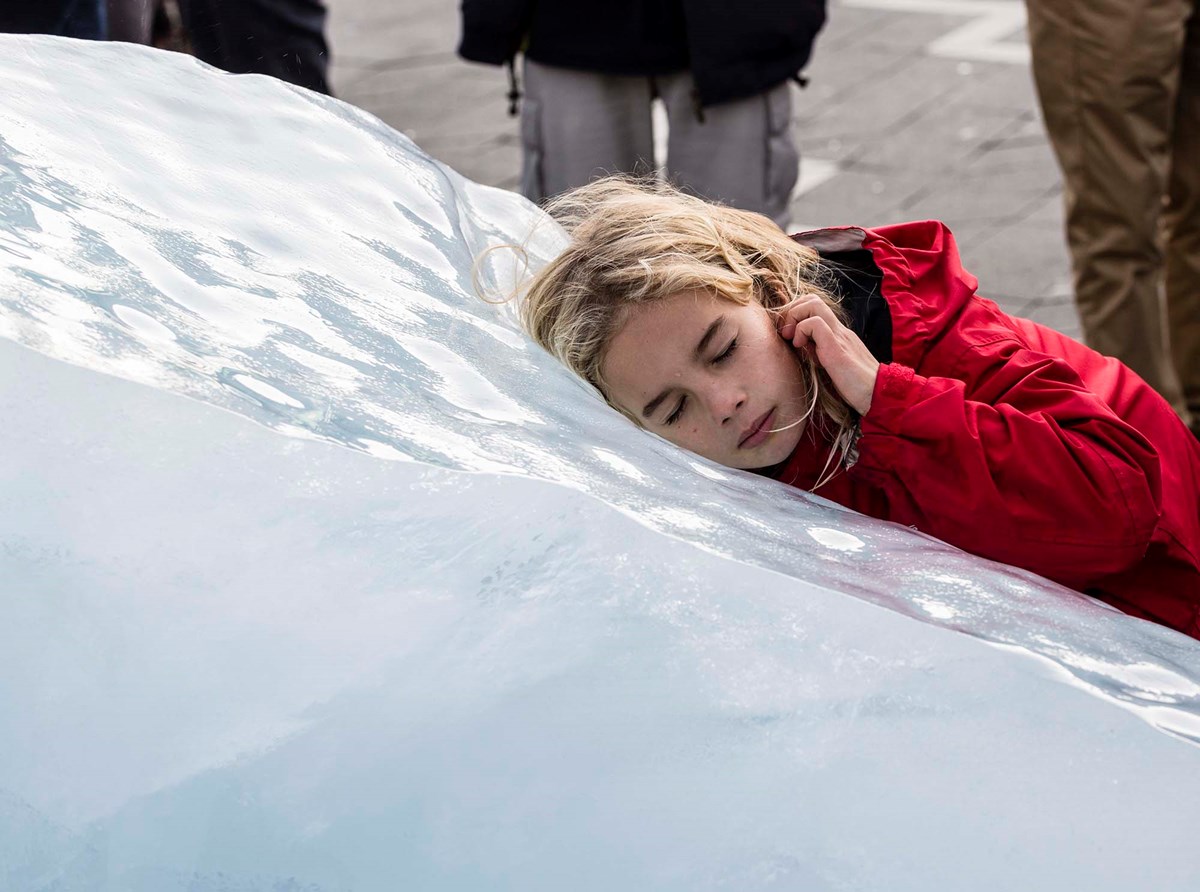
Maybe we should not always try to quantify everything but just do something for the potential of feeling good and happy.
Much of your work is informed by scientific findings. What can the worlds of art and science learn from each other?
Alongside being inspired by scientific findings, art can also learn a lot from the methodology of science: the critical approach to things, the work in a laboratory, the knowledge of how to do empirical tests, and so forth. What art can contribute to science, I think, is its confidence in process-oriented, non-quantifiable success criteria. Science is often very goal-oriented but risks missing out on the unforeseen and unpredictable successes. Furthermore, there is the role of creativity. It would be wrong to say that scientists are not creative, but creativity is something that art nurtures very well for obvious reasons. And part of the notion of creativity is also the relationship between art and the world. To be creative is not just to paint a great painting with great colours, but also to consider the consequences of adding a colour to the work, to ask: what does this work of art do to the world? In a similar way, I think that science can benefit from being creative with regard to understanding its own relationship to the wider world.
What scientific advances do you consider particularly relevant in the field of light?
There have been revolutionary advances in how light is generated and transmitted in recent years, particularly in terms of energy efficiency. What interests me in this respect is that we have a very uneven energy distribution in the world today. There are places, such as Iceland, that literally ‘sit’ on their own – in this case, geothermal – power plant. Then there is the rest of Europe, which is gradually becoming more comfortable with idea of becoming independent of fossil fuels. However, this does not make up for the fact that a very large part of the world does not have access to any form of adequate energy supply. For example, one in seven people in the world are using kerosene as their primary source of light. As kerosene is very expensive, households in rural Africa spend between 15 and 25 % of their monthly income on lighting their homes. Furthermore, this light is not just expensive but also bad for people’s health, as burning kerosene in the home causes respiratory conditions. Hence, there is an urgent need to consider all these new lighting technologies and see how one can apply them with relevant economic models in parts of the world where there is little access to energy or where its price is so high that it keeps these areas from evolving economically.
What was your main inspiration in starting the Little Sun project, which aims to change this situation?
I am utterly convinced that being an artist makes you capable of doing more than just working in the art world. Hence, I wanted to see if I could use this potential, as well as the exposure that I have come to enjoy, within a field that has so far not been associated with art, but without me leaving the art world altogether. As I explained, for a long time I had been interested in the psycho-social impact of access to light on every level of our lives. Furthermore, I had become aware of the situation in areas without access to energy. I also happened to know a solar engineer, Frederik Ottesen, who was very interested in similar questions. We discussed whether it would be possible to produce something with a high design quality, focusing on non-quantifiable success criteria but at the same time delivering a competitive alternative to kerosene lamps. After all, if we want to get rid of kerosene we need to make access to solar energy cheaper. Moreover, we wanted to do so in an empowering way, not only to provide people with light but also with a business opportunity, or at least a financial benefit. Once they had bought a Little Sun, they would save money for at least three years on kerosene. The savings very quickly amount to the price they would otherwise pay for the fuel, but they have to pay a relatively big sum for the lamp up front. We therefore wanted to produce and distribute the lamps at the lowest possible cost, and we also sought ways to finance them through micro-loan organisations.
What are the main differences between designing an art project or a luminaire that is produced several thousand times and has to obey the rules of the mass market?
It is true that there are significant differences, and my team is now dealing with a lot of administrative questions that you normally do not have to face as an artist. It is hard to do a work of art, but getting customs clearance to import goods into Ethiopia is a quantum leap in and of itself! What interests me, however, is how the light works once it has made the journey from my sketch through the production machinery and into the hands of the people who are going to be working with it, who need the light. The aim is that this journey becomes sustainable and reflects the overall values of the project. My main focus is on getting the lamps out to where it matters, their impact.
What has been the most important experience you have made with the project in this respect? What feedback have you received from people who bought and use the lamps?
We often talk about very quantifiable successes such as getting a child to read a book, keeping your kiosk open longer so you can earn more money, improving indoor air in the huts for the health of small children especially, and preventing kerosene lamps from falling over and burning houses. This is the typical way that such projects are discussed, but the truth is what convinces people to buy a lamp is often the irrational, the non-quantifiable aspects. We see people buying the lamp because they want to give it as a present. People are also buying it because the design makes them happy. They buy the lamp because of emotional responses. In a way, this should not surprise me because I would act in the same way. I do not organise my household around the most pragmatic, health related things but I do things that I think are beautiful and make me happy.
In the industrialised world, we tend to have the idea of Africa being the ‘other place’, but we totally underestimate how much we have in common. Actually, people in Africa want just the same as us: they want to be happy, to have beautiful things in their homes, and to have a safe next day. They want to know whether the school is open. So the Little Sun project is a great deal about suggesting what we have in common, not what is different. And what we have in common is our wish for light and our consciousness about climate change. People in Ethiopia, for instance, are very keen on using renewable energy as it can save them a fair amount of energy, but also because, like everybody else in the world, they are interested in the environment. Why should they not be?
We can ask; what type of identification with a space makes you feel included and welcome and hosted? What architectural resources does it take for the people in the space to feel that they are worth s
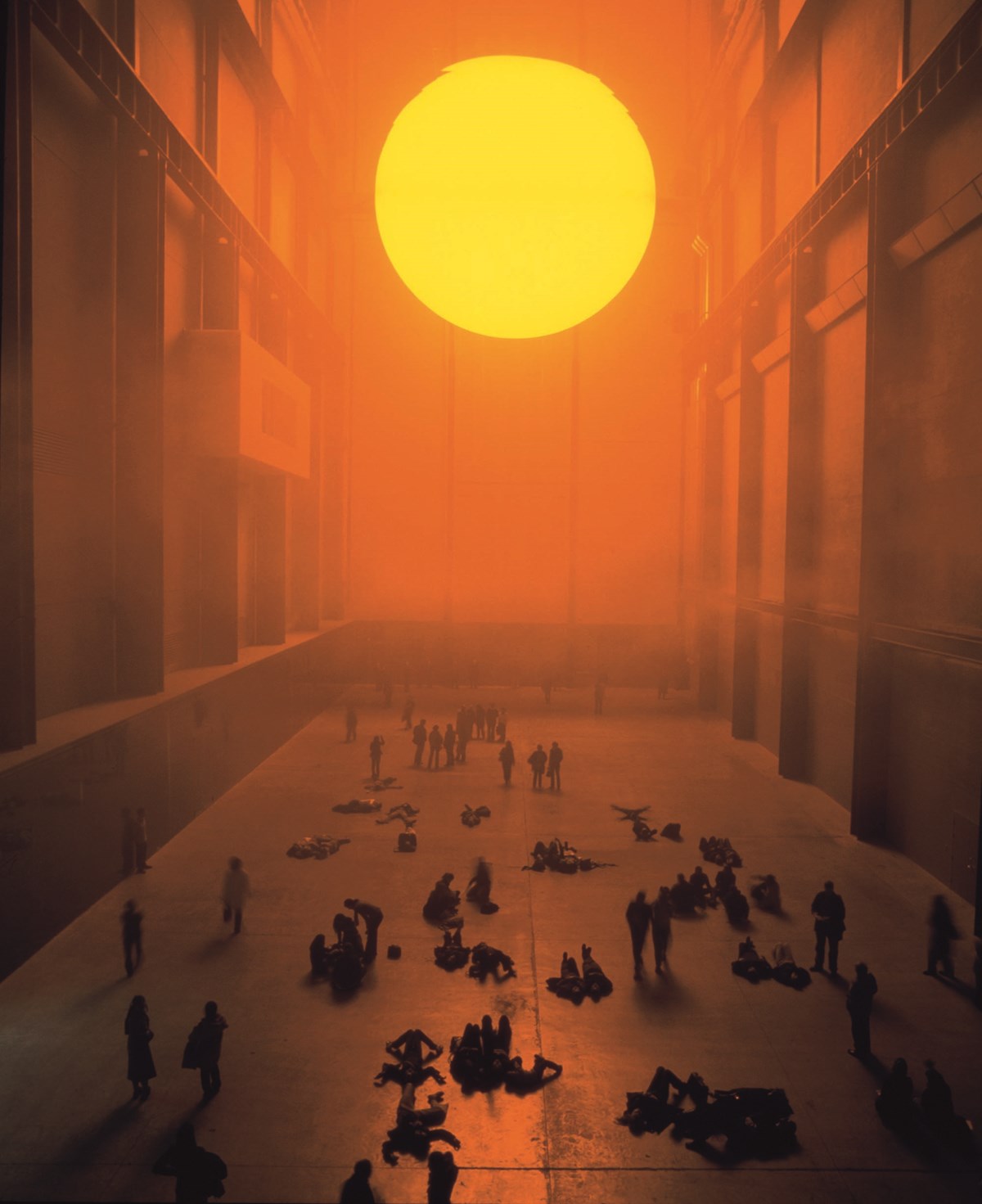
How does this emotional approach relate to your artistic work? What do the two have in common?
Essentially, my approach is the same on both occasions. The focus on the experiential and the emotional components has been central to both my artwork and Little Sun. You don’t go to Africa with a pragmatic answer; you go there with a human eye and with an emotional, socially relevant answer. My art projects often deal with abstraction, something that is non-verbalised, something that is interesting but takes time to engage with and immerse oneself into. This belief in something abstract could actually be very relevant to society. Maybe we should not always try to quantify everything but just do something for the potential of feeling good and happy. This type of compassion-driven thinking is present in my art work, but it also lives in Little Sun. It is not my compassion to a specific person without energy but the kind of compassion that is all around, in-between everyone.
You have now embarked on another design, a new kind of lamp, with the Natural Light competition. How does this fit into your overall strategy for the Little Sun project?
The Natural Light competition was a great collaboration between the VELUX Group and Little Sun. It was an exciting opportunity for us to learn from and work with a company that has the kind of stamina, knowledge base and the resources that the Group VELUX has.
Together, we decided that the competition should reach out to the educational sector, both to encourage young designers to respond to the question of energy supply and to address the fact that, by using the energy of the sun, we can go a long way in this respect. So it was both a design competition and an awareness campaign. In the end, it was really difficult to choose a winner because so many great ideas were submitted by students from all around the world.
The winning design really delivered on all accounts: it was practical, affordable, beautiful and very convincing in terms of its market potential. We are very curious to test this new lamp in Africa and see if it can bring about new successes that we have not been able to foresee so far.
Olafur Eliasson (born 1967) grew up in Iceland and Denmark, studied at the Royal Danish Academy of Fine Arts in Copenhagen and subsequently set up his own studio in Berlin, Germany, in 1995. Today, Studio Olafur Eliasson encompasses some ninety craftsmen, technicians, architects, administrators, art historians and other specialists. From 2009 to 2014, Olafur Eliasson held a professorship at the Berlin University of Arts. Among his bestknown works are The blind pavilion at the 2003 Biennale of Art in Venice, The weather project (Tate Modern, London 2003), the Serpentine Gallery Pavilion 2007 (London, together with Kjetil Thorsen) and the New York City Waterfalls (2008). In 2012, Eliasson and engineer Frederik Ottesen founded the social business, Little Sun.
